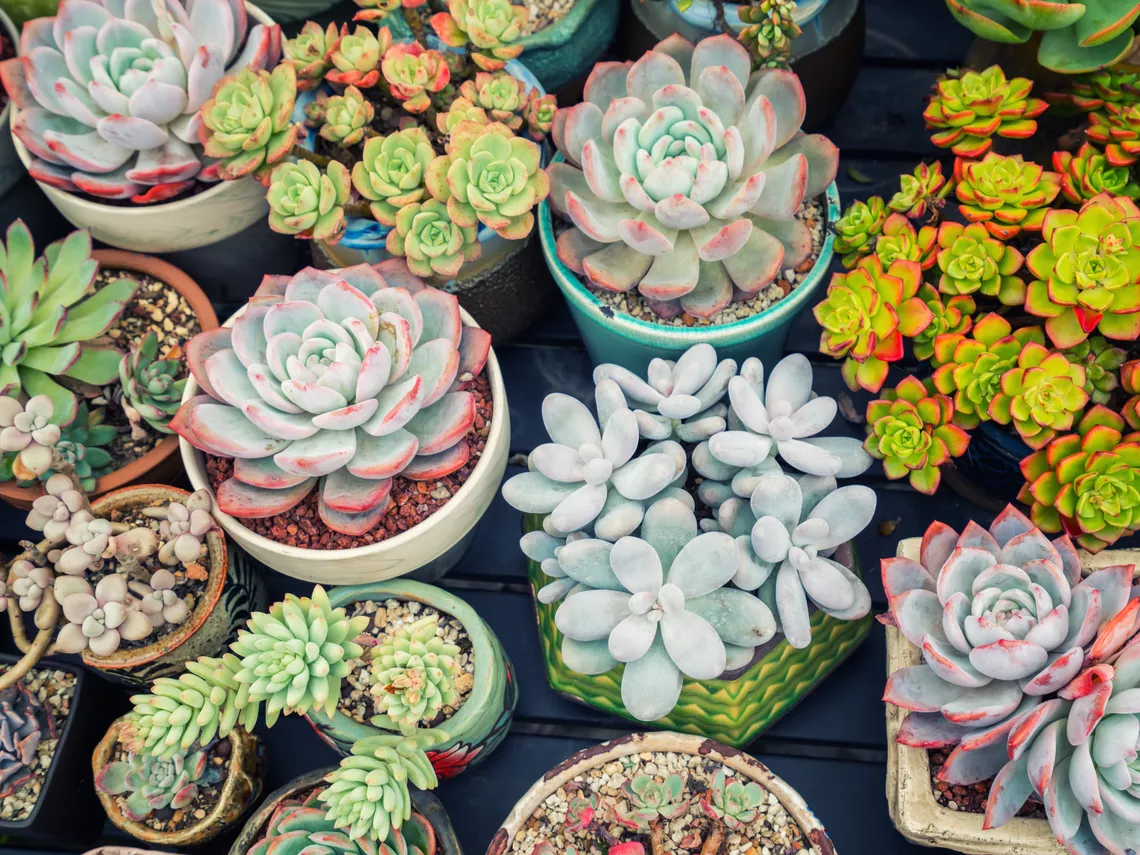Succulents are prized for their resilience and low maintenance, making them a popular choice for both seasoned gardeners and beginners. However, even these hardy plants can face challenges, and one of the most common issues is aphid infestations. Aphids are tiny, sap-sucking insects that can wreak havoc on succulents if left unchecked. In this article, we will explore effective strategies for treating aphids on succulents to help you maintain a healthy and vibrant succulent collection.
Understanding Aphids and Their Impact on Succulents
1. Identifying Aphids
Aphids are small, soft-bodied insects that come in various colors, including green, black, brown, yellow, and even pink. They often cluster on the new growth, undersides of leaves, and stems of succulents. Their rapid reproduction rate and ability to multiply quickly can lead to severe infestations if not addressed promptly.
2. Aphids’ Mode of Feeding
Aphids feed on the sap of plants by piercing the plant tissue with their specialized mouthparts. This feeding behavior weakens the succulent, causing stunted growth, curling leaves, and even transmitting viruses.
Signs of Aphid Infestation
Early detection of aphid infestations is crucial for effective control. Keep an eye out for these signs:
1. Clustering on Plant Parts: Aphids tend to gather in groups, particularly on tender shoots and undersides of leaves.
2. Deformed Growth: Curled or distorted leaves can be an indication of aphids feeding on the succulent’s sap.
3. Sticky Residue: Aphids excrete a sweet, sticky substance called honeydew, which can attract ants and lead to the growth of sooty mold.
Preventing Aphid Infestations
Prevention is the first line of defense against aphids and other pests. Implement these preventive measures to minimize the risk of infestation:
1. Healthy Plant Care
Maintain the overall health of your succulents through proper care, including:
Good Drainage: Ensure that your succulent pots have adequate drainage to prevent waterlogged soil, which can weaken the plants and make them more susceptible to pests.
Proper Light and Temperature: Position your succulents in areas with appropriate light levels and temperatures suitable for their specific needs.
Correct Watering: Avoid overwatering, as excess moisture can attract pests and create an ideal environment for aphids to thrive.
2. Inspect New Plants
Before introducing new succulents to your collection, inspect them thoroughly for signs of aphids or other pests. Isolating new plants for a few weeks can prevent potential infestations from spreading to your established plants.
Natural Ways to Treat Aphids on Succulents
When dealing with aphid infestations on succulents, it is essential to opt for methods that are safe for the plants and the environment. Here are some natural remedies to consider:
1. Blast Them Away with Water
A simple yet effective method to get rid of aphids is to use a strong stream of water to dislodge them from the plant. Gently spray your succulents with water, paying close attention to the underside of leaves and new growth. Repeat this process regularly until the aphids are gone.
2. Introduce Beneficial Insects
Encouraging natural predators of aphids can help maintain a balanced ecosystem in your garden. Ladybugs, lacewings, and hoverflies are natural enemies of aphids and can help keep their populations in check. Consider planting nectar-rich flowers to attract these beneficial insects or purchase them from reputable suppliers for release in your garden.
3. Neem Oil Spray
Neem oil is a popular organic insecticide that disrupts the feeding and reproductive behavior of aphids. Mix neem oil with water according to the manufacturer’s instructions and spray it on your succulents, targeting the affected areas. Repeat the treatment every 7 to 14 days until the infestation subsides.
4. Insecticidal Soap
Insecticidal soap is another effective and safe solution for controlling aphids. This soap works by penetrating the insects’ outer layer, causing dehydration and eventually leading to their demise. Follow the instructions on the product label and apply the soap to your succulents, ensuring thorough coverage of the affected parts.
Chemical Control of Aphids
While natural remedies are preferable for treating aphids on succulents, severe infestations may require the use of chemical insecticides. If you choose to use chemical treatments, take the following precautions:
1. Targeted Application
Use insecticides that specifically target aphids, as broad-spectrum insecticides can harm beneficial insects and upset the balance of your garden ecosystem.
2. Follow the Instructions
Carefully read and follow the instructions on the insecticide label. Incorrect application can be harmful to your succulents and the environment.
3. Protective Measures
Consider using physical barriers, such as row covers or netting, to prevent aphids from reaching your succulents in the first place.
Regular Inspection and Maintenance
To keep aphids and other pests at bay, incorporate regular inspection and maintenance into your gardening routine:
1. Monitor Your Plants
Regularly inspect your succulents for signs of aphids or other pests. Early detection allows for faster treatment and containment.
2. Pruning
Remove heavily infested parts of the succulent to prevent the aphids from spreading to healthy areas. Dispose of the pruned material properly to avoid spreading the infestation.
3. Quarantine
If you suspect an infestation, consider isolating the affected plant to prevent the pests from spreading to other succulents.
Conclusion
Aphid infestations on succulents can be concerning, but with the right knowledge and strategies, you can effectively manage and treat these pests. Implement preventive measures, use natural remedies, and resort to chemical control only when necessary and with caution. Regularly inspect and care for your succulents to keep them healthy and thriving, free from the nuisance of aphids and other pests. By following these guidelines, you can enjoy a beautiful and pest-free succulent garden for years to come.


